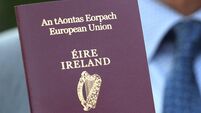Heroin key problem for homeless women
It topped the list of the most used drug by the city’s homeless female population, with cannabis, head-shop substances and un-prescribed benzodiazepines next on the list.
A fifth of the city’s homeless women use drugs, with almost half of all women in emergency accommodation taking drugs.
Heroin was the most commonly used drug, with almost a third of women in emergency accommodation taking it, and all of the city’s long-term homeless women taking the drug. Just 11% of long-term homeless men take the drug.
Drug use was exclusive to 16 to 44-years-olds with 24% of 16-26 year-olds and 26% of 27-44 year-olds using.
The figures are contained in a stark new report, Women’s Health and Homelessness in Cork, which will be launched in the city tomorrow as part of Simon Week 2011.
“The scale and extent of health and related needs being experienced by women who are homeless in Cork is stark,” the report says.
“Women who are homeless tend to be younger than men who are homeless; have high rates of poor physical and mental health; are much more likely than men who are homeless to self-harm and express suicidal thoughts; and have much the same rate of attempted suicide as men who are homeless.”
But Cork Simon’s chief executive Dermot Kavanagh said there are solutions.
“Early intervention is crucial,” he said.
“It is also critical that homeless people have access to the full range of medical interventions, harm reduction and drug-treatment programmes and to detox beds.”
He said he has seen peoples’ lives transform after they get access to such programmes.
The health study was conducted over a week in early July 2011 when Good Shepherd Services, which specifically supports women, girls and children of all ages, and Cork Simon Community, which supports men and women over 18, recorded the health and related needs of people using their projects and services.
During the week, Good Shepherd Services supported 91 women while Cork Simon supported 24.
A total of 31 women were in emergency accommodation, with 20 in Good Shepherd’s Edel House and 11 in Cork Simon’s Emergency Shelter.
Four of the women staying in Edel House were accompanied by their eight children, ranging in age from eight months to 12 years.
The report found that:
* 65% of women in emergency accommodation used alcohol;
* 60% of women in emergency accommodation using alcohol indicated problem alcohol use;
* 45% of women in emergency accommodation used drugs and nearly three quarters of them used heroin;
* 65% of women in emergency accommodation that used drugs used two or more drugs — polydrug use;
* 64% of women in emergency accommodation that used drugs were intravenous users.
A quarter of the women surveyed were in receipt of a Department of Social Protection Disability Allowance, an indicator of the serious nature of ill-health amongst the group, and a further 14% were in receipt of a Department of Social Protection Illness-related benefit.
Almost 60% of the group had a diagnosed physical health condition, including asthma, anaemia and high blood pressure, and just over half had a diagnosed mental health condition.
Depression was by far the most common diagnosed mental health condition followed by bipolar disorder and panic attacks.
The most common triggers for women becoming homeless were family conflict, followed by domestic violence and personal alcohol or drug use.
The average age of the women was 33 years — 10 years younger than the average age of a homeless man.












